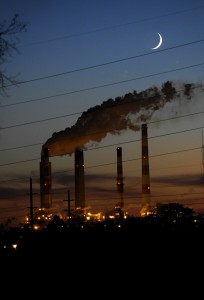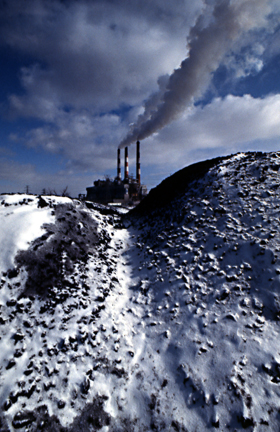August 5, 2015 – by Brad Plumer at VOX
It’s easy enough to describe the basics of the Clean Power Plan, President Obama’s sweeping new policy to reduce carbon dioxide emissions from America’s power plants. Heck, we can do it in a single paragraph.
The EPA is giving each state an individual goal for cutting power plant emissions. States can then decide for themselves how to get there. They can switch from coal to natural gas, expand renewables or nuclear, boost energy efficiency, enact carbon pricing … it’s up to them. States just have to submit their plans by 2016-2018, start cutting by 2022 at the latest, and then keep cutting through 2030. Oh, and if states refuse to submit a plan, the EPA will impose its own federal plan, which could involve some sort of cap-and-trade program. Done.
When the dust settles, EPA expects US power plant emissions will be 32 percent lower in 2030 than they were in 2005. A significant cut, though still just a tiny piece of what’s needed to halt global warming.
So then why does the rule need to be 1,560 pages long? Because that synopsis above still leaves tons of questions unanswered. How did the EPA actually come up with each state’s emissions target? Why does every state have a different target? What, exactly, can states do to cut emissions? What if they want to work together? If states refuse, what sort of federal plan gets handed down from on high?

The Clean Power Plan does not include industrial boilers like this one at Alcoa in Warrick County, IN. Those were dealt with in a previous rule making. © 2010 BlairPhotoEVV
This fine print will matter a lot. So, for those curious about how the rule actually works, here’s a more detailed step-by-step guide to what EPA is doing:
1) The EPA is setting individual emissions goals for 47 states
This is a key starting point. There isn’t a single nationwide policy here. Instead, the EPA is setting different targets for 47 states — that is, 47 separate state goals for reducing carbon dioxide emissions from power plants by 2030.
Why just 47 states? Vermont and Washington, DC, are exempt because they don’t have any large fossil fuel or electric power plants, so there’s nothing to cut. Meanwhile, Alaska and Hawaii aren’t covered under the rule for now because the EPA is still mulling how to deal with their unique grid situations. The agency says they’ll get regulated eventually.
2) State emissions goals are set by a complicated formula
So how did the EPA actually set each state’s target? This part is a tad more complex, and it’s completely different from how the agency calculated state goals in last year’s draft proposal of the Clean Power Plan. I’ll walk through the broad steps involved:
— First, take stock of the nation’s fossil-fuel power plants. The EPA started by tallying up all the coal, oil, and natural gas power plants across the United States, placed them into two broad categories, and then figured out their average emission rates in 2012 in each of the country’s three main electric-grid regions.
More-

